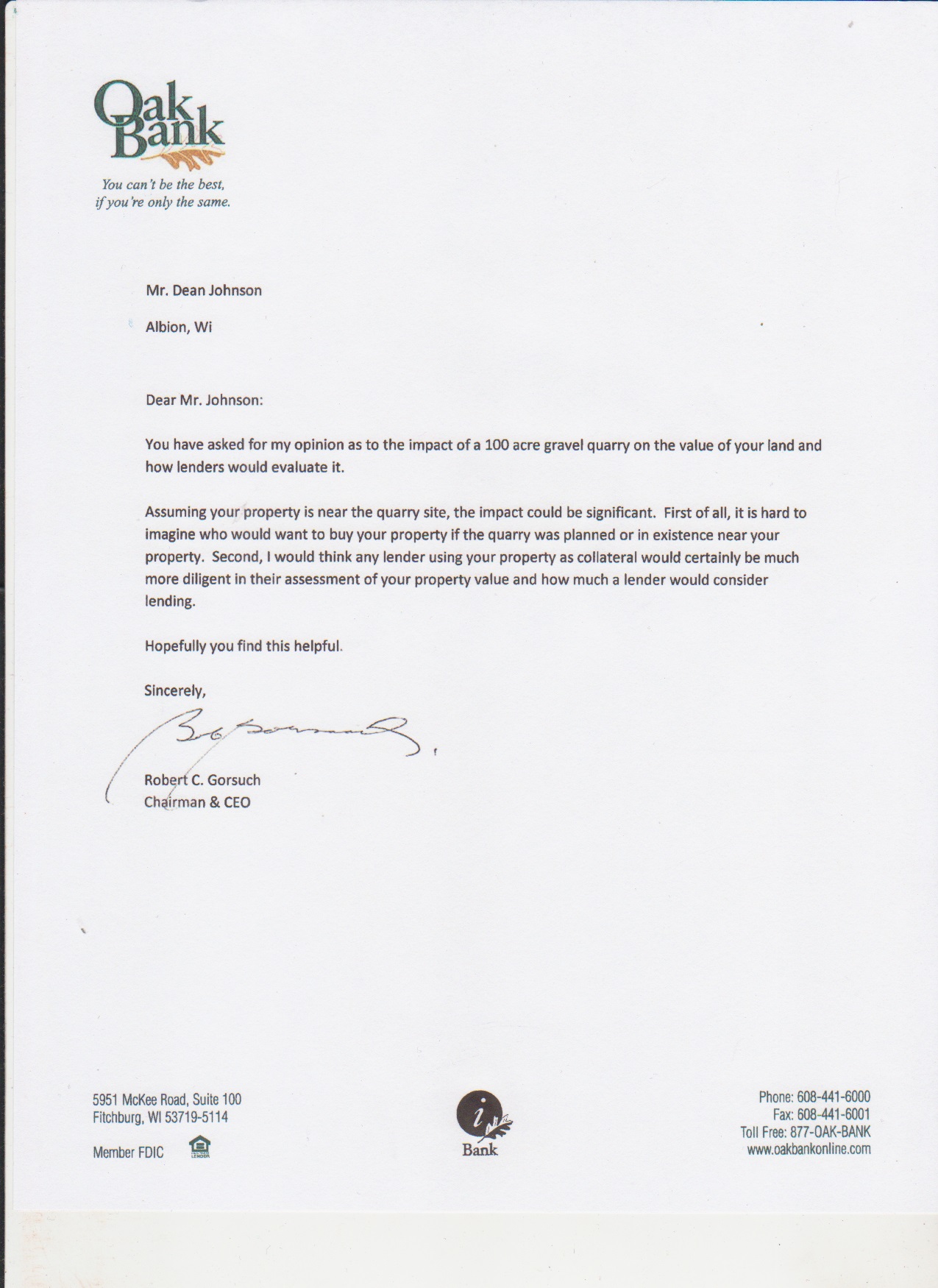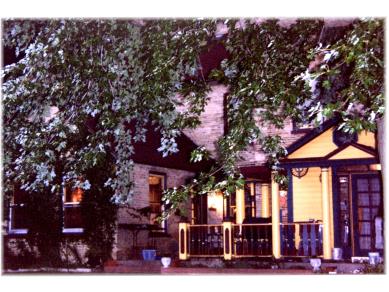
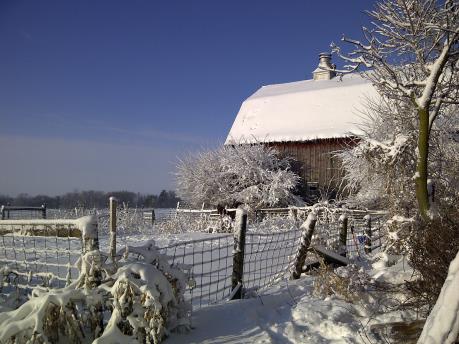
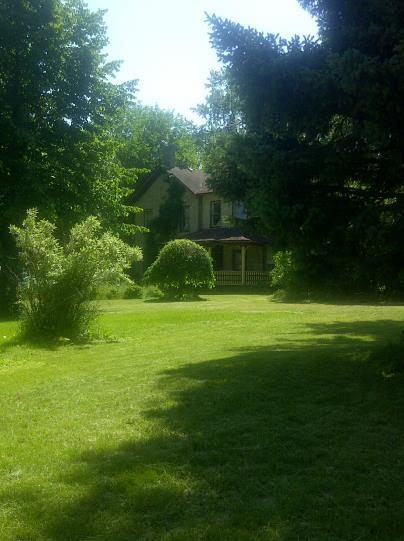
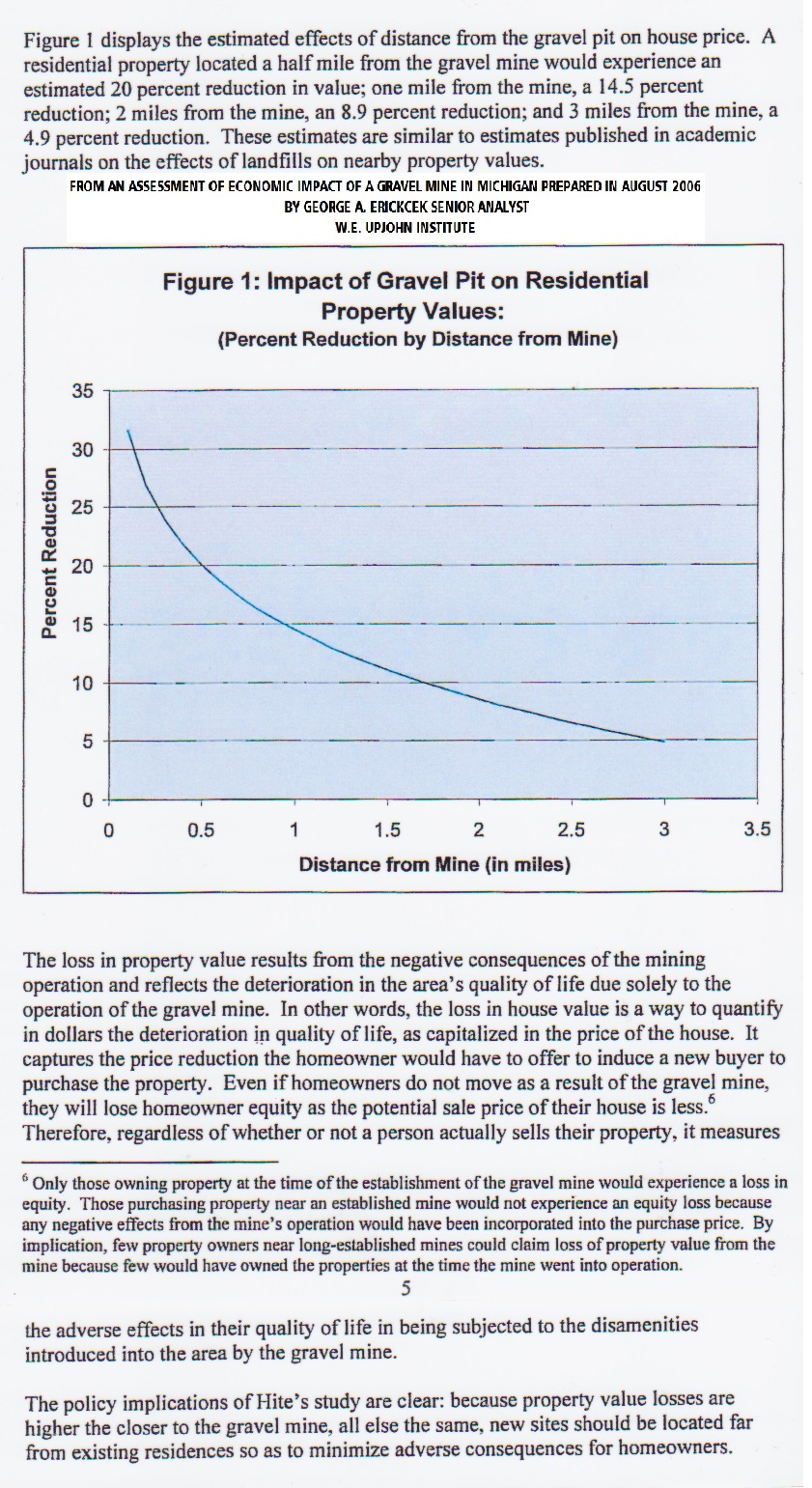
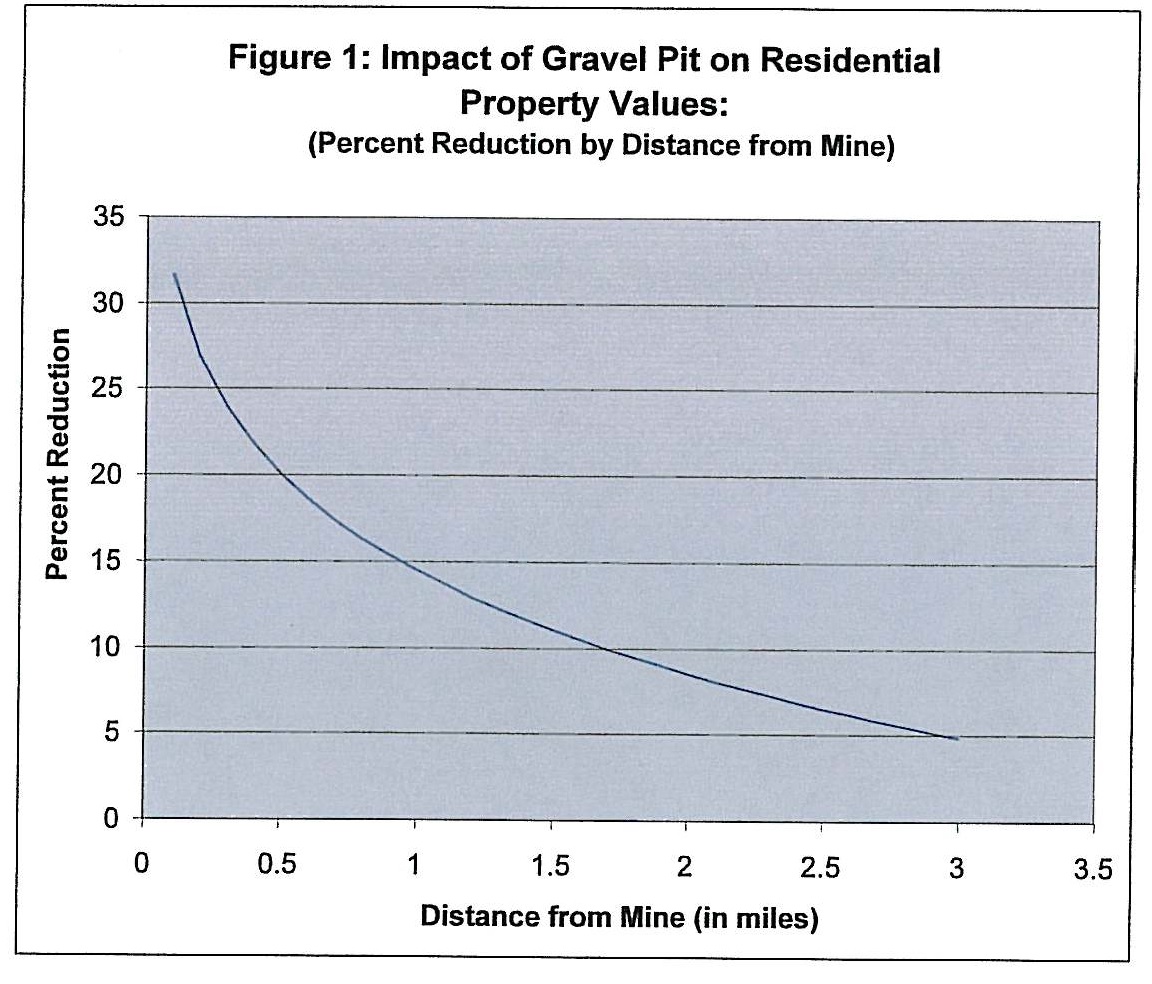
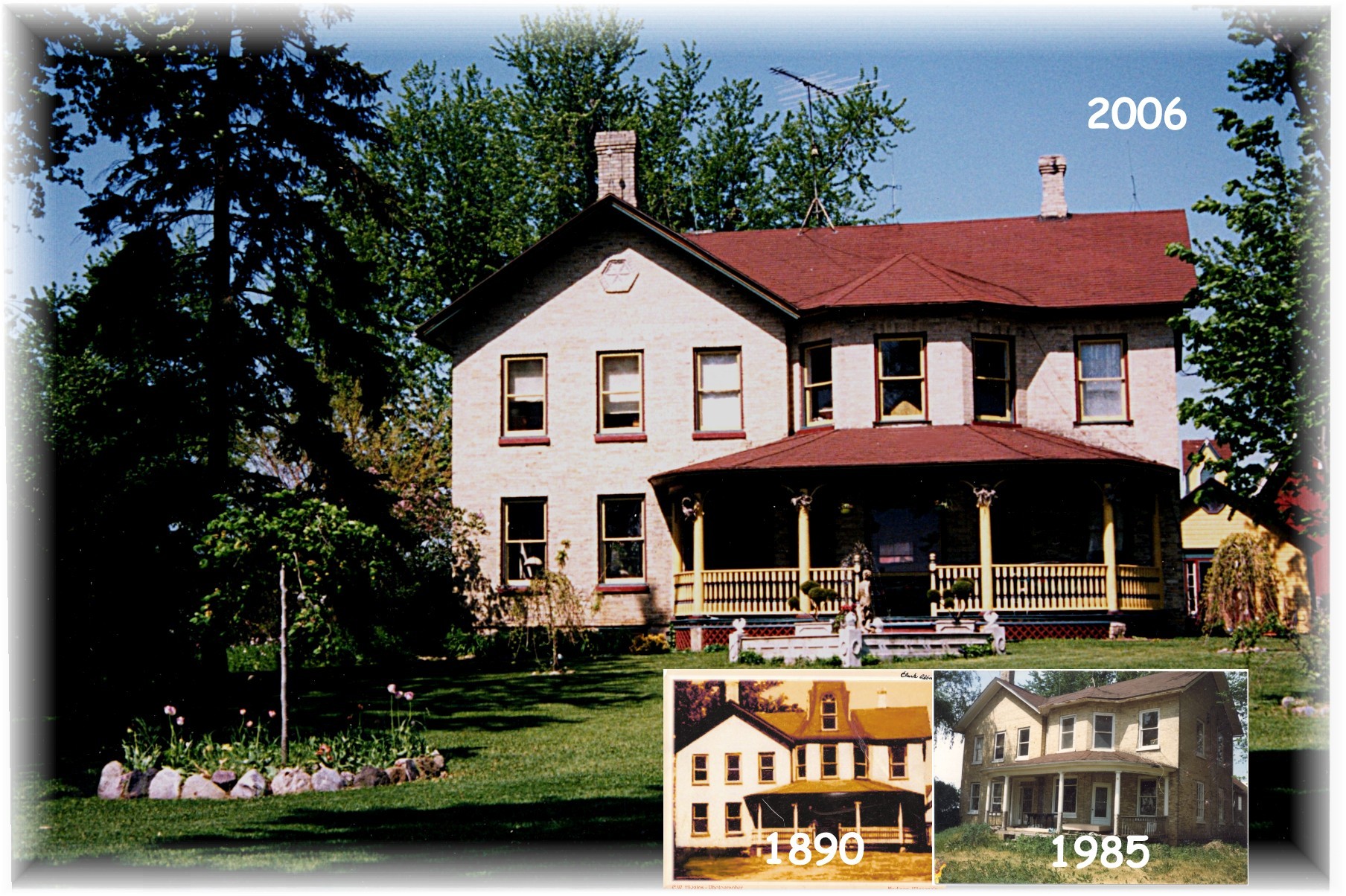
Owners of the historic Clarke homestead have two properties that will be just 500' from this site. The current value of these properties is $439,000 according to Zillow (real estate value site)
They purchased this home in 1986, and researched for any historic mine sites prior to purchase, there were no mines. CUP #2260 is a NEW mine site, this is not fair to owners of neighboring properties that did due diligence in selecting a home away from mines and zoning that permits mines as these owner did. The owners of the historic Clarke homestead will lose $153,650 in home value the minute this is approved, could you afford that?
HISTORIC CLARKE FARM RENOVATION ENDED BY QUARRY PLAN

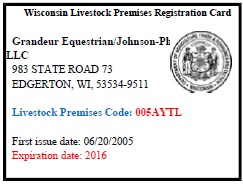
WE HAVE PROPERTY RIGHTS
WE ARE A REGISTERED EQUINE LIVESTOCK PREMISES
WE HAVE EXISTING EQUINE ZONING
WE HAVE BEEN CONTINUOUS IN EQUINE ACTIVITY FOR 28 YEARS
WE PURCHASED OUR PROPERTY FOR EQUINE ACTIVITY
WE WILL LOSE OUR ACTIVITY INSURANCE
WE WILL BE PREVENTED FROM CONDUCTING ANY EQUINE ACTIVITY BY CUP #2260
DECLINING PROPERTY VALUES: The negative impacts on local property values of a new quarry operation in a community are clear and irrefutable. The reduction in value of properties are significant, as high as 25% or more, and are irrespective of whether a local resident actually sells his or her property. In extreme cases, properties dependant on wells for water can be rendered virtually worthless in the event of a total collapse of the water table. It is also important to note that these impacts are permanent.
The Facts About Quarries
BLASTING: One of the most common complaints associated with a quarry operation is the blasting. When an explosive is detonated enormous amounts of energy are released. While some of the energy of a blast works to displace rock from the quarry face, the remaining energy is released as vibrations through and along the surface of the earth and through the air creating air concussions.
DUST: There is no such thing as a “dustless” quarry. Dust is created by blasting, crushing of rock, and transporting of crushed rock over the road networks. Dust from quarry operations creates increased siltation to lakes and water courses. Dust from crushing rock causes the largest problem. Crushing often takes place every day, or every other day, during the quarry season (ie from late March or early April to late November). Rock dust is very fine and once it which Northern Construction indicates it intends to use, then these chemicals, too, are likely to wash into our lakes and watercourses.
NOISE POLUTION: Just like there is no such thing as a “dustless” quarry, there is no such thing as a “quiet” quarry. Noise is created by blasting, crushing, stockpiling, and transporting the rock. The noise created by blasting is sudden, and while it may be brief, the noise created by crushing rock is constant during the quarry operations and can be heard from some distance away.
SERIOUS THREATS TO WATERCOURSES: Watercourses are particularly susceptible to quarry operations, particularly runoff and dust. In the Fall River area many of our lakes, which are interconnected and flow from one to another through the Shubenacadie lakes system, are fragile and already stressed by development. Increased runoff which might carry silt, or chemicals, into these lakes, can negatively impact on their ecologies and health. There are chemicals remaining from blasting, which are particularly high in nitrates as the slurry used in blasting is, in effect, a form of fertilizer.
IMPACT ON ECOSYSTEM: The proposed quarry site is in close proximity (within 500 metres) to the Waverley Game Sanctuary, a 12,000 acre site to the north and east of Soldier’s Lake. The Waverley Game Sanctuary is zoned as a special, protected, area, and was created to protect wildlife habitats and endangered and rare flora and fauna. Being this close to such a protected area, and given the impacts expected of a quarry, it is difficult to reconcile this operation with the designation and goal of protecting wildlife habitat and protecting endangered flora and fauna.
TRAFFIC PROBLEMS: Another significant impact of a quarry operation on a community is the sizeable increase in traffic including large trucks to transport material produced in the quarry. As the shortest route from the Fall River quarry to major construction areas to the south and west (including metro Halifax) is down Perrin Drive, the likelihood of overwhelming the traffic flow patterns in and around the 102 and 118 highways is increased.
DECLINING PROPERTY VALUES: The negative impacts on local property values of a new quarry operation in a community are clear and irrefutable. The reduction in value of properties are significant, as high as 25% or more, and are irrespective of whether a local resident actually sells his or her property. In extreme cases, properties dependant on wells for water can be rendered virtually worthless in the event of a total collapse of the water table. It is also important to note that these impacts are permanent.
People worldwide oppose proposals for the development of new quarries or the expansion of existing
facilities in their neighbourhoods. The opposition is understandable. As the Pembina Institute4 recently
pointed out:
Operators of pits and quarries remove virtually all vegetation, topsoil and subsoil to access the
resource. In so doing, they remove any natural habitat that may have been on site, and disrupt
pre-existing stream flows . . . The extraction of aggregate resources changes the slope of the
land and alters water drainage patterns . . . Once the aggregate is extracted . . . water storage
capacity is lost. Aggregate operations . . . are characterized by the release of significant
amounts of particular matter (i.e. dust) and noise pollution from extraction and processing
activities as well as smog precursors and greenhouse gases from the operation of heavy
equipment and machinery. The heavy truck traffic to and from aggregate sites is often a serious
hazard and nuisance affecting people over wider areas, and is a significant source of air
pollution itself.
The quality of life sought by rural residents reflects the sum total of the many desirable attributes of rural
settings including peace, solitude, proximity to nature, etc.
It is impossible to measure with financial precision the value rural residents place on each individual
quality of life attribute. It is possible, however, to measure with financial precision the extent to which an
area threatened by a new quarry has been rendered less attractive to existing and potential future residents.
This can be done by observing the impact a new quarry has on property values in the area. The loss in value
of nearby properties quantifies the impact of a new quarry on the deterioration in the quality of life of its
nearby residents. The price reduction of properties reflects the incentive owners must offer to induce new
buyers to purchase their property. Irrespective of whether a local resident actually sells his or her property,
the reduction in the value of a person’s property measures the adverse effects on the quality of life
perceived by new purchasers associated with the disamenities introduced into the area by the new quarry.
Section 5
THE IMPACT OF QUARRIES ON PROPERTY VALUES
Many factors influence house prices including the characteristics of the unit itself (house age, size, lot size,
number of bedrooms, number of bathrooms, quality of construction and upkeep, etc.). Other factors can
also play a significant role, including proximity to amenities (a lake, pleasant neighbourhoods, major
employment centres, urban services, etc.) or to disamenities (landfill sites, pollution sites, quarries, etc.).
Professor Diane Hite of Auburn University in Alabama is an economist that has published widely in the
area of property value impact analysis. Using a hedonic pricing model procedure which separately
accounts for the relative impacts on house values of the variety of attributes described above, Professor
Hite examined the effects of distance from a gravel mine in Delaware County, Ohio on the sale price of
more than 2,500 residential properties in the late 1990s.
Her model controls for a large set of other unit and location specific factors so that she can focus solely on
the effect of the proximity of the gravel mine on home sale price.
George E. Erickcek of the W.E. Upjohn Institute for Employment Research recently used Professor Hite’s
model to assess the potential impacts of the proposed Stoneco Gravel Mine in Richland Township,
Michigan on property values in the area.7 Exhibit 6 (below) recreates a chart contained in Erickcek’s
assessment based on Hite’s model. Exhibit 6 relates the impact of distance from the gravel pit on property
values. The chart below differs from that in the original publication in that distance in Exhibit 6 is
measured in kilometres as opposed to being measured in miles in the original.
Exhibit 6 (below) reveals that properties closest to the gravel mine faced the largest value declines, and that
property value declines diminished with distance from the mine:
Properties within 0.5 kilometres of the mine dropped in value by 25 percent or more.
The decline 1.0 kilometre away was between 15 and 20 percent.
The decline 1.5 kilometres away was just under 15 percent.
The decline 2.0 kilometres away was just over 10 percent.
The decline 3.0 kilometres away was just under 10 percent.
The decline 4.0 to 5.0 kilometres away was between 5 and 7 percent.
It is important to note that these impacts are permanent. While it is true that properties within a 2 kilometre
or 5 kilometre radius of the proposed site will increase in value in the future in line with increases in
average property values in general in the broader area, it is equally true that the gap in values resulting from
the negative impact of the quarry persists over time.
The average negative impact on property values within a 2 kilometre radius of the site was 19 percent.
The average impact within a 5 kilometre radius was 8 percent.
The Erickcek report notes the following:
There is an extensive literature applying hedonic models to study the effects of environmental
disamenities on residential property values. These studies generally show that proximity to
landfills, hazardous waste sites, and the like has a significant negative effect on the price of a
residential property.
Erickcek applied Hite’s Ohio-based model results to the proposed new site in Michigan. The following
section applies Hite’s results to the properties in the Rockfort Quarry study area.
Home News Quarry in the Media The Facts about Quarries Photo Gallery Resources Calendar What Needs to be Done
Consider what your home would be like without water
The serious negative impacts of quarry operations on both groundwater quantity and quality are well documented not only in Nova Scotia but around the world.
Quarries disrupt the existing movement of both surface water and groundwater. They interrupt natural water recharge and often lead to dramatic drops in the water table resulting in reductions in quantity of drinking water available for neighbours in all directions surrounding the quarry site. Residential wells in the vicinity of the quarry may run dry and the base flow in the regional streams may be reduced. Furthermore the dust from blasting and grinding as well as the siltation carried by the drainage through the blasted rock can affect the quality of the groundwater over a widespread area.
In an area of the province where water availability is already precarious, it would be both inappropriate and reckless to establish a quarry operation in Fall River.
Devalued Real Estate
People worldwide oppose proposals for the development of new quarries or the expansion of existing facilities in their neighborhoods. The opposition is understandable. Operators of pits and quarries remove virtually all vegetation, topsoil and subsoil to access the resource. In so doing, they remove any natural habitat that may have been on site, and disrupt pre-existing stream flows . . . The extraction of aggregate resources changes the slope of the land and alters water drainage patterns . . . Once the aggregate is extracted . . . water storage capacity is lost. Aggregate operations . . . are characterized by the release of significant amounts of particular matter (i.e. dust) and noise pollution from extraction and processing activities as well as smog precursors and greenhouse gases from the operation of heavy equipment and machinery. The heavy truck traffic to and from aggregate sites is often a serious hazard and nuisance affecting people over wider areas, and is a significant source of air pollution itself.
--Pembina Institute, 2005
